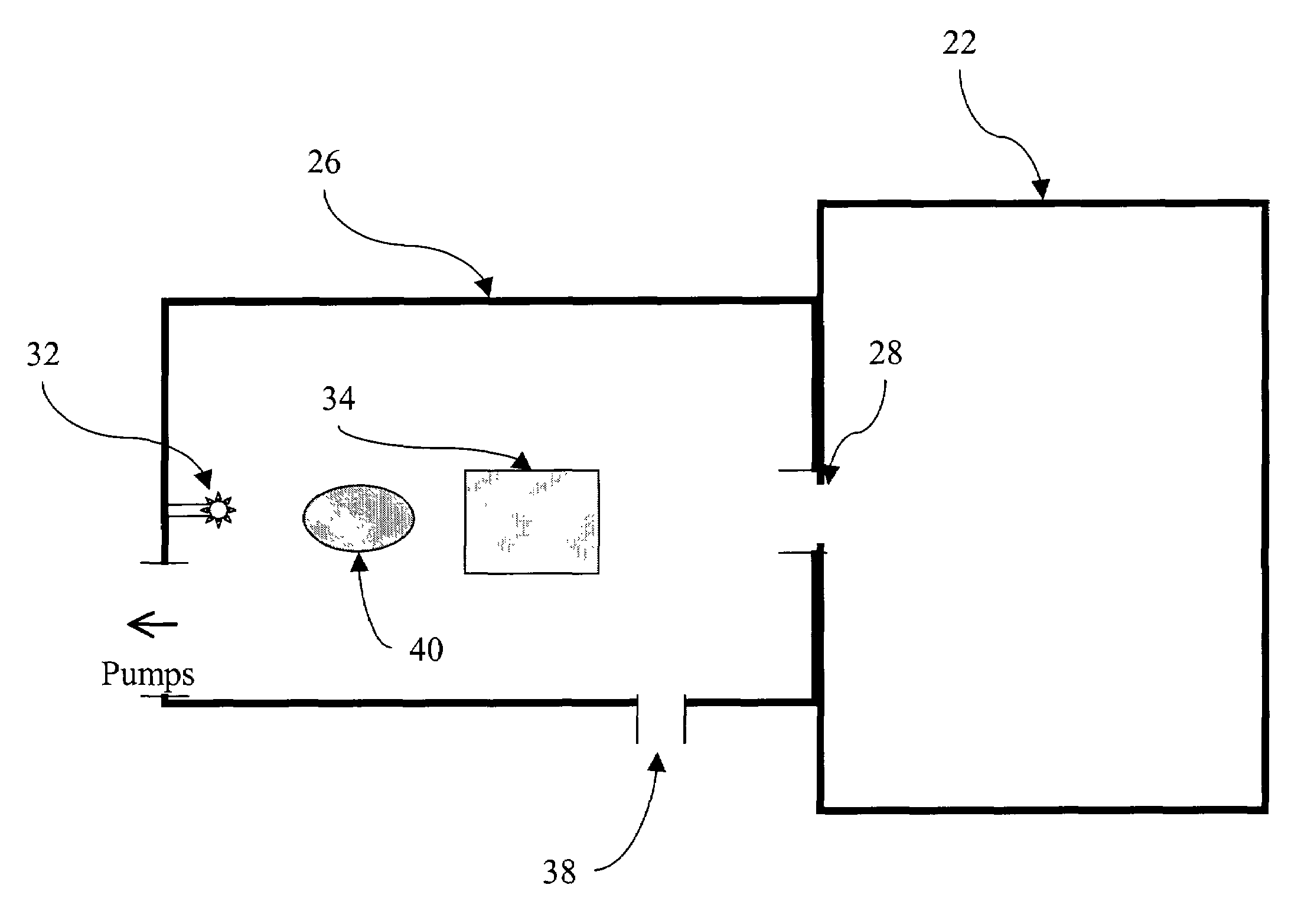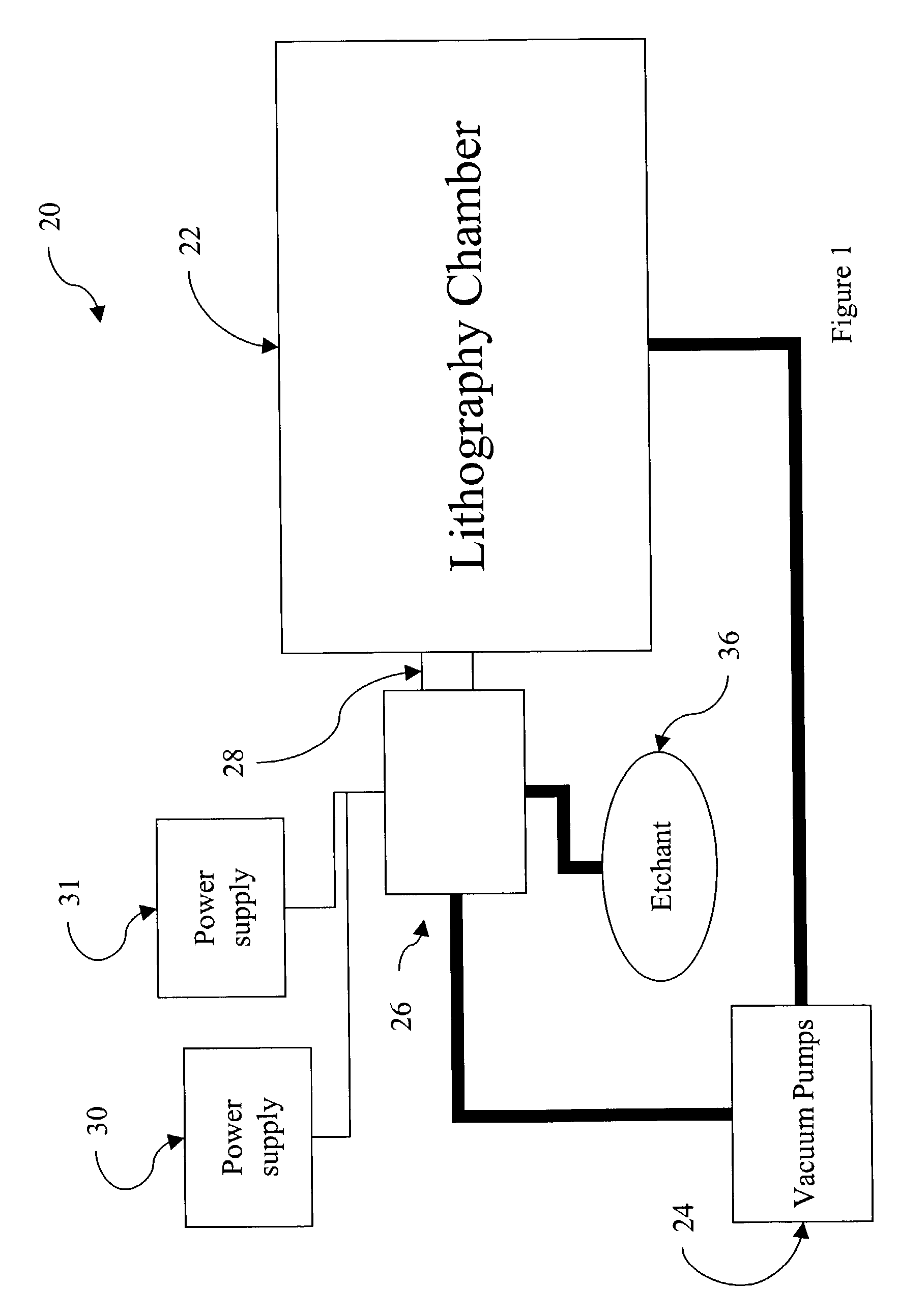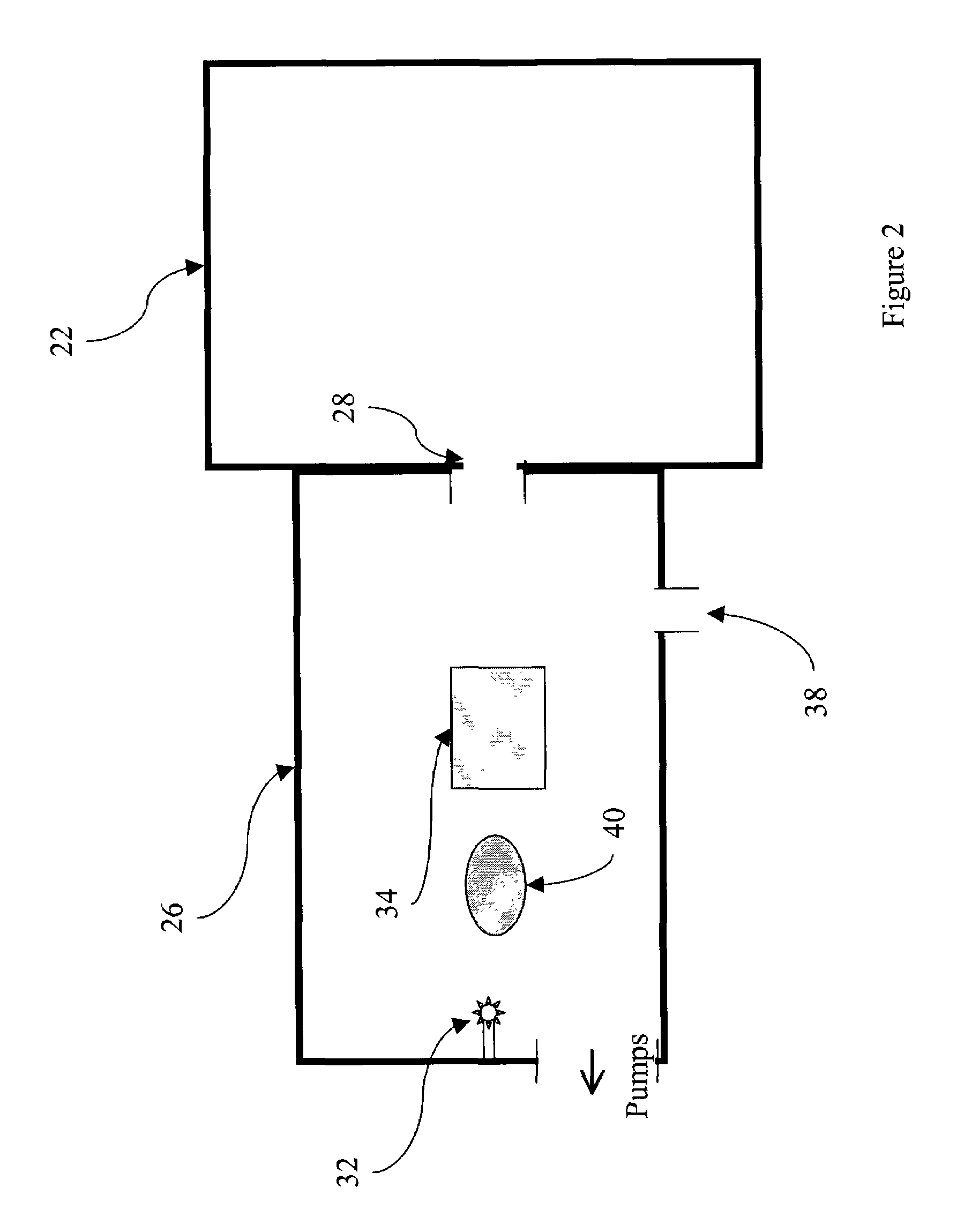In-situ cleaning of light source collector optics
a technology for light source collectors and optics, applied in the direction of cleaning using liquids, instruments, photomechanical equipment, etc., can solve the problems of loss of reflectivity and reduce the amount of light available for lithography
- Summary
- Abstract
- Description
- Claims
- Application Information
AI Technical Summary
Problems solved by technology
Method used
Image
Examples
Embodiment Construction
[0015]FIG. 1 shows a lithography system 20. The wafer with the light sensitive coating and the mask are placed in the lithography chamber 22. The pressure in the lithography chamber 22 is reduced to a near vacuum environment by vacuum pumps 24. A light source chamber 26, which houses a light source, is connected to the lithography chamber 22. The pressure in the light source chamber 26 is also reduced to a near vacuum environment by vacuum pumps 24. The light source chamber 26 and lithography chamber 22 are separated by a valve 28 that can be used to isolate the chambers 22, 26. This allows for different environments within each chamber.
[0016]The light source chamber 26 can be a EUV chamber, which houses a EUV light source. A power supply 30 is connected to the EUV chamber 26 to supply energy for creating a EUV photon emitting plasma, which provides EUV light for lithography. The light source chamber is evacuated by vacuum pumps 24.
[0017]FIG. 2 shows the light source chamber 26 conn...
PUM
| Property | Measurement | Unit |
|---|---|---|
| wavelengths | aaaaa | aaaaa |
| wavelengths | aaaaa | aaaaa |
| wavelengths | aaaaa | aaaaa |
Abstract
Description
Claims
Application Information
 Login to View More
Login to View More - R&D
- Intellectual Property
- Life Sciences
- Materials
- Tech Scout
- Unparalleled Data Quality
- Higher Quality Content
- 60% Fewer Hallucinations
Browse by: Latest US Patents, China's latest patents, Technical Efficacy Thesaurus, Application Domain, Technology Topic, Popular Technical Reports.
© 2025 PatSnap. All rights reserved.Legal|Privacy policy|Modern Slavery Act Transparency Statement|Sitemap|About US| Contact US: help@patsnap.com



